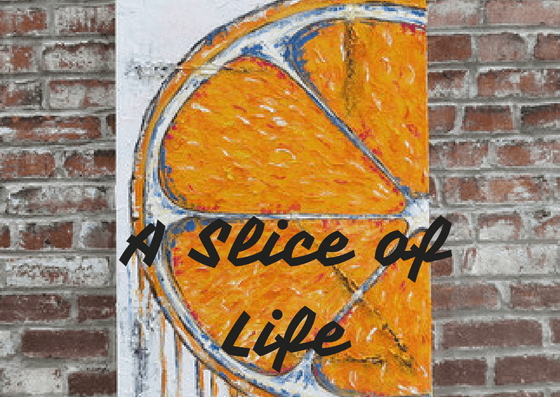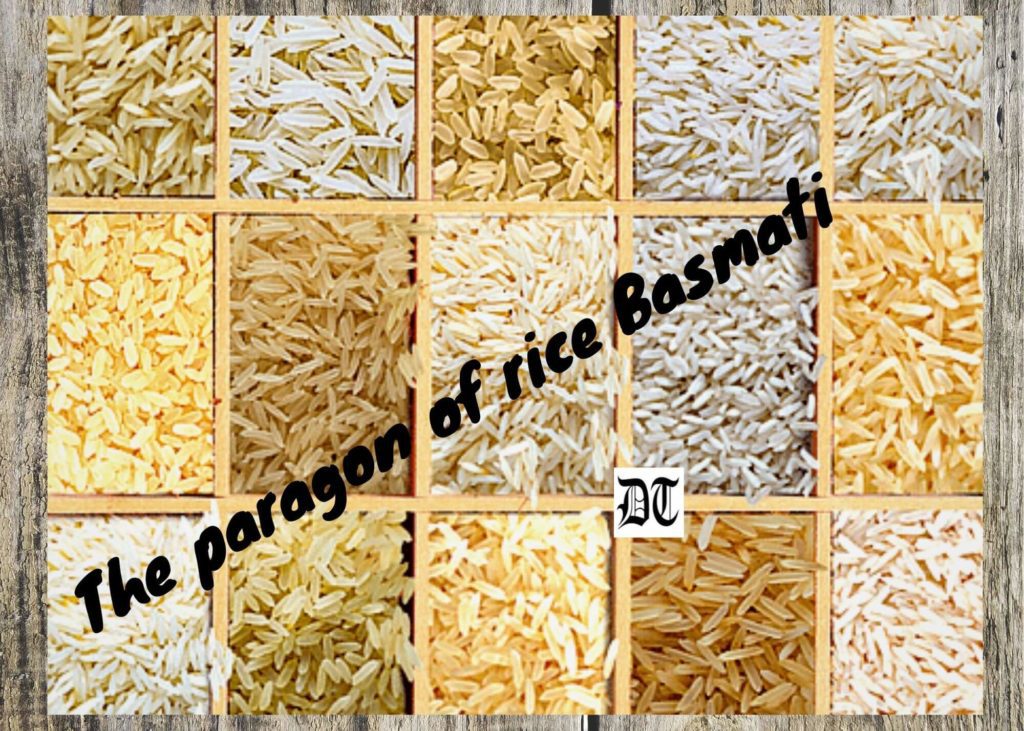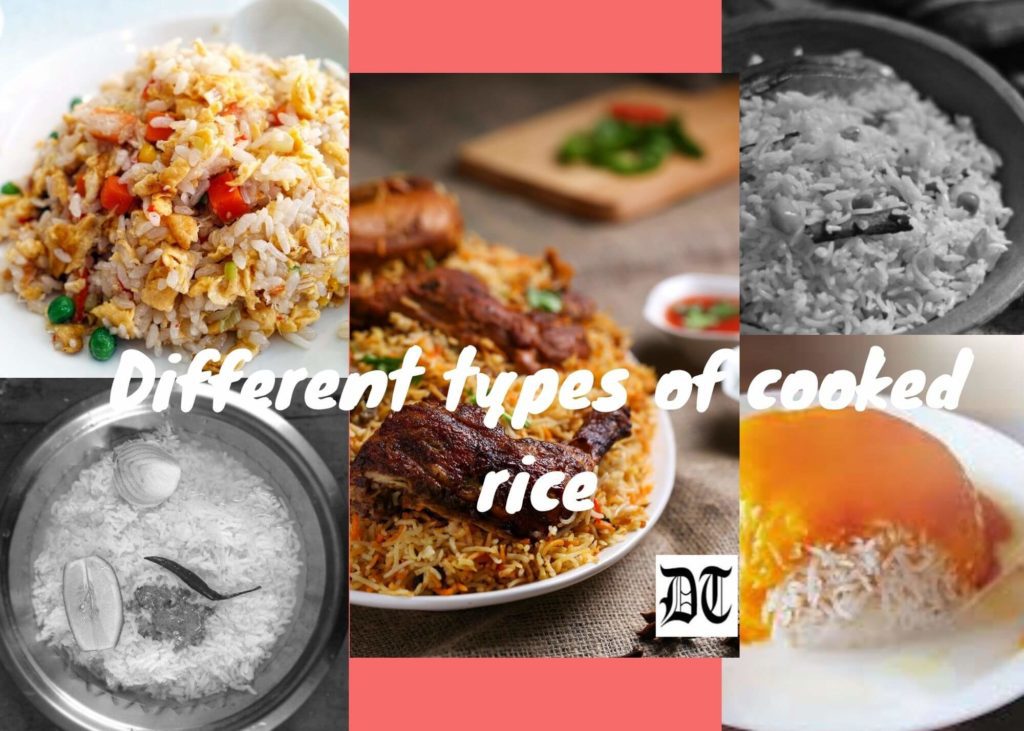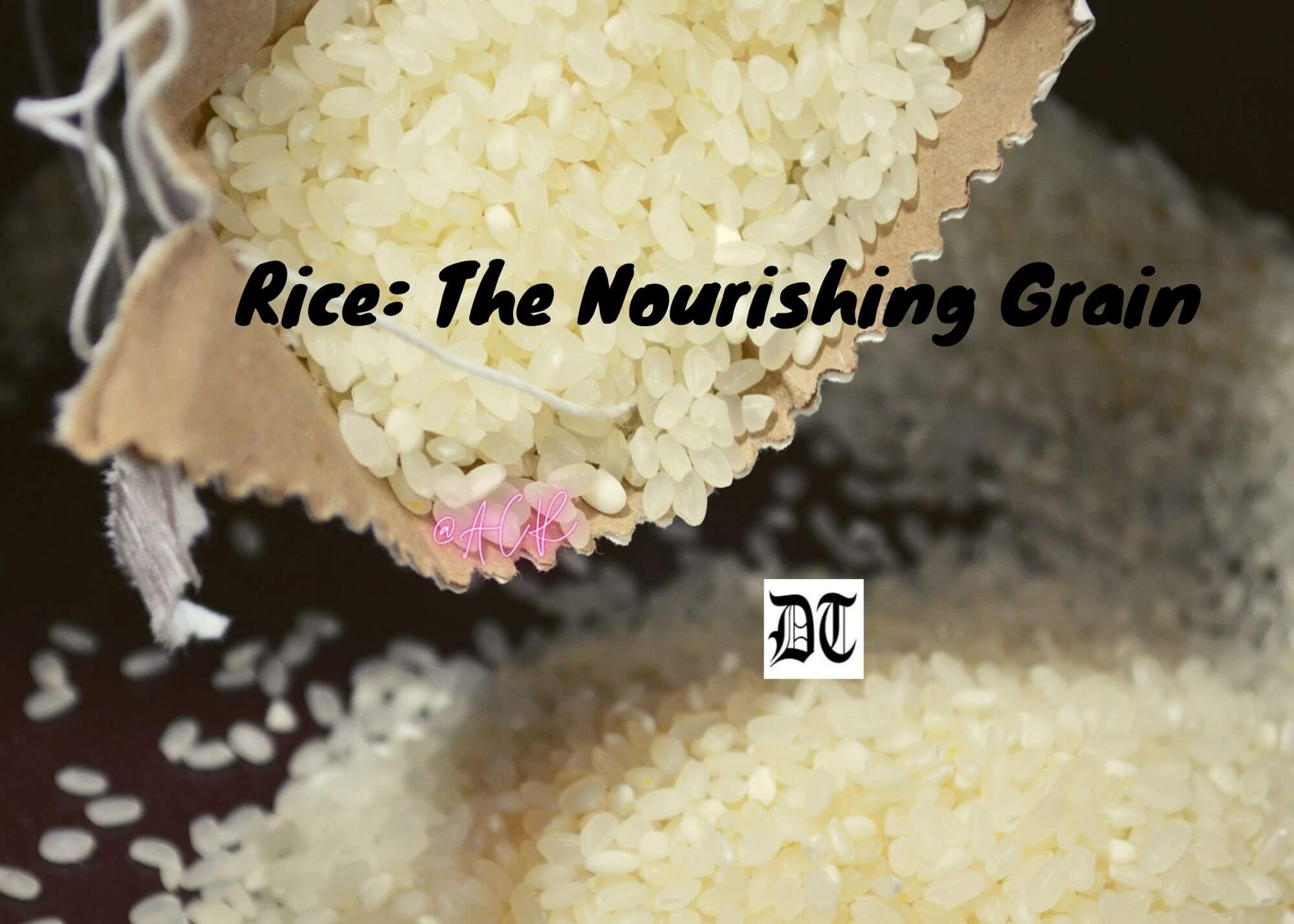Reading Time: 4 minutes
Ruchira traces the antiquity of rice and tells us about this grain. An exclusive for Different Truths.

Rice: this four-letter word sounds divine to hungry hearts, affording a blend of bliss, peace, and satisfaction. It is amazing how this plant of the ubiquitous grass family has evolved as the producer of a highly popular and widely consumed cereal grain at the global level. It would indeed be an uphill task to delve thoroughly into the antecedents of rice but suffice it to say that originating in the fertile low-lying riverbanks of China, rice traversed the globe during voyages, exodus, and mass migration of populace down the centuries. Interestingly, rice was a familiar commodity in ancient civilisations – China, Japan, Greece, Harappan, et al– pertaining to pre-Christian centuries. As of now, the highest consumption of rice occurs in Far East, South, and South East Asia, besides Africa.
There exist a complex nomenclature and classification system for rice depending on its cultivars, region of cultivation, the season of sowing, harvesting, and so on.
There exist a complex nomenclature and classification system for rice depending on its cultivars, region of cultivation, the season of sowing, harvesting, and so on. For instance, in West Bengal and adjoining Bangladesh, Aman variety is sown in the rainy season and harvested in winter. Aus is sown when pre-monsoon showers begin, and harvested in autumn, while Boro is sown in winter and reaped next summer.

Hailed as the paragon of rice Basmati is long-grain rice extensively used in ethnic Indian dishes.
Rice is also categorised based on colour, texture, aroma, size, shape, length of grain, and such like. Hailed as the paragon of rice Basmati is long-grain rice extensively used in ethnic Indian dishes. When cooked it imparts a classy aroma. Jasmine rice, (aka Thai fragrant rice) is another long-grain rice that assumes a slightly sticky texture when cooked. Should you desire to add a subtle aroma to your dishes go for it.
Personally, I have been on a diet of brown rice for almost three years now. It has helped in shedding excess weight and maintaining the altered weight. Rich in vitamins and minerals, brown rice is strongly recommended by dieticians.
In eastern parts of the country namely Bengal and Assam, several famous rice varieties hold sway. For example, Bengal’s Tulaipanji, when cooked, assumes excellent taste, fine texture, and aroma besides non-sticky and friable properties. Assam’s Joha rice too is notable for its aroma and delicate taste. Who hasn’t heard of Gobindobhog the short grain, pearly, sticky rice with a pleasant flavour? Owing to its distinctive attributes it was originally served to family deities in elite Kolkata households. Hence the name. Commonly consumed by Bengalis, “Parboiled”rice (sheddo chaal) is rich in potassium, calcium, magnesium, and iron. Unfortunately, widows of yore were forbidden to consume it, lest the presence of nutrients cause a spurt in hormones, ignite their passions, and lead them astray. The staple for the poor widows was sun-dried white aatap rice, not so rich in nutrients
There are lots you can do with this wondrous grain. Innumerable are its uses. Rice bran oil is a moderately priced healthy cooking medium. Rice papad is a popular accompaniment for tea.

There are lots you can do with this wondrous grain. Innumerable are its uses. Rice bran oil is a moderately priced healthy cooking medium. Rice papad is a popular accompaniment for tea. Then we have murmura /puffed rice and chiwra / flattened rice flakes which serve as handy snacks at any hour of the day. For the main course, there is the ubiquitous pulao wherein uncooked rice grains are sautéed along with spices, vegetables, etc, and then steamed. In the case of fried rice pre-cooked rice is fried in oil with veggies, meat, and condiments. In the case of Biryani parboiled rice is drained, dried, and used to make layers. Indeed, Biryani is multi-layered, with at least one layer each of meat and fried onions. The ingredients are half-cooked separately, then layered. Biryanis are stuffed with a motley of aromatic spices. The cooking vessel, usually a wide-rimmed metal handi, is sealed with wheat flour dough and then set on a low flame to cook for long hours. Sealing helps to keep the aromas intact.
Onward to simple everyday dishes. The bulk of India’s rice consuming population – inhabiting the coastal belt –use piping hot plain boiled rice with dollops of homemade ghee/clarified butter, and a pinch of salt, as a starter. Bengali add-ons to this are either mashed boiled potatoes or sliced potato fries. Southerners use a dried powdered mixture of three to four types of lentils/dal. In common parlance, this is termed “gunpowder”. It is mandatory to use dried whole red chilies (fried /roasted) to add zing to the dish.
On hot summer days, traditional Bengali and Odiya platter would include panta bhat (pokhor in Odiya).
On hot summer days, traditional Bengali and Odiya platter would include panta bhat (pokhor in Odiya). Leftover cooked plain rice soaked in water is allowed to stand overnight. Next morning, this is eaten with some salt, a dash of lemon onion slices, fritters, pickles, et al. Replete with micro-nutrients this dish would make one feel satisfied for a greater part of the day. Nor could I forget fena bhaat which was perfect for weekend brunches. Here rice is cooked without draining out the starch so that it becomes mushy and soft. My mother used to add grated coconut, blobs of desi ghee, and salt to the mishmash. We ate this with discs of crispy fried aubergine/eggplant. Let me assure you it was superb!
Bengalis copiously utilise rice in their desserts including payesh/ kheer /payasam, which anyway is a pan-Indian dish. Rice powder is used in making patishapta/pancake besides an assortment of pithe. Rice figures in makeshift desserts e.g., aam dudh kawla diye bhat (rice-mango-banana-milk), and dudh gur diye bhat (rice-palm jaggery-milk). In the no mango season, aamsattva /aampapad/sun-dried mango pulp fits the bill equally well.
Well, the Bheto Bangali (hardcore rice-eating Bong) that I am, I look forward to having a plateful of bhat – if not daily – at least thrice a week.
Visuals by Different Truths













